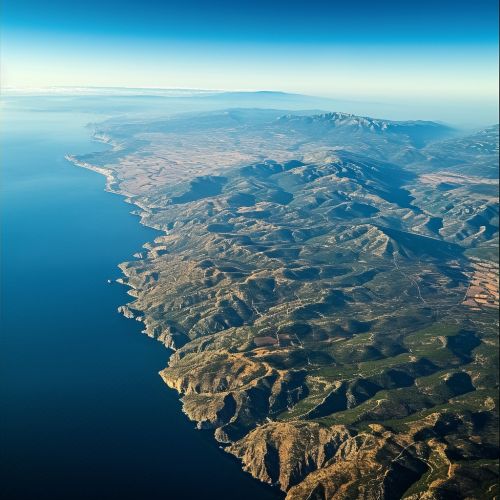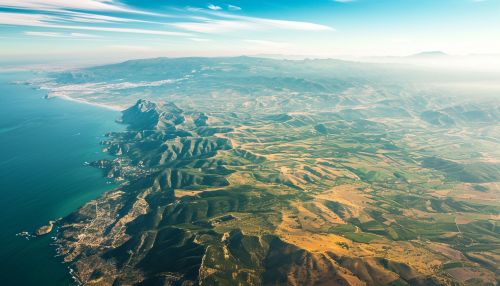Iberian Peninsula
Geography
The Iberian Peninsula, also known as Iberia, is located in the southwest corner of Europe. It is primarily divided into Spain and Portugal, covering an area of approximately 582,000 square kilometers. The peninsula is bounded by the Mediterranean Sea on the east and south, the Atlantic Ocean on the west and north, and the Pyrenees mountain range on the northeast.


Geology
The geological structure of the Iberian Peninsula is complex due to its formation over hundreds of millions of years through various geological events. It is composed of a variety of rock types, including granite, limestone, and slate, which have contributed to the diverse landscapes found across the region.
Climate
The climate of the Iberian Peninsula is diverse, ranging from a Mediterranean climate along the coasts, to a continental climate in the interior, and an oceanic climate in the northwest. This climatic diversity has resulted in a wide range of ecosystems and biodiversity.
History
The history of the Iberian Peninsula is rich and complex, with human habitation dating back to the Paleolithic era. It has been the site of numerous invasions and migrations, including the Celtic tribes, Roman Empire, Visigothic Kingdom, Islamic Caliphate, and the Reconquista by Christian states.
Culture
The Iberian Peninsula is home to a rich cultural heritage, with influences from many civilizations that have inhabited the region. This is reflected in the languages, religions, architecture, music, and cuisine of Spain and Portugal.
Economy
The economies of Spain and Portugal, the two countries that make up the Iberian Peninsula, are among the largest in Europe. They are characterized by a mix of industries, including tourism, agriculture, manufacturing, and services.
